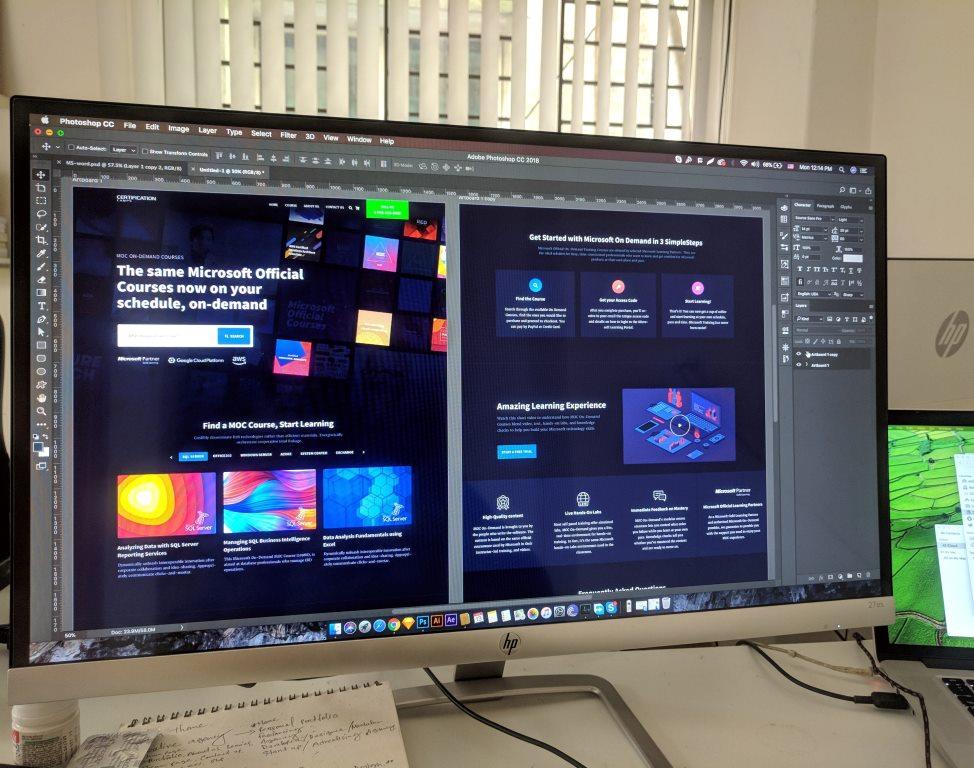X Web Design Tips for a Stellar Website


Source: Unsplash.com
According to common opinion, a website’s success does not hinge solely on how it looks. The website’s design must be top-notch. In today’s world, the most successful website layouts put the customer experience first. Any web designer knows that a site’s features, navigation tabs, calls to action, and everything else must work harmoniously to deliver a first-rate user experience.
Elements of a website’s design shouldn’t be created just based on personal preference. Although a website with flashy hues, numerous functions, and an aesthetically pleasing text display may please the designer, it will be for naught if its users find it difficult to navigate.
Although optimizing for user-centric design is an exercise that relies heavily on research into what users prefer or expect in a specific niche. While there is no magic bullet for creating a user-friendly website, several foundational principles can set a designer on the path to success.
If you’ve been working on your site for a while, you probably shouldn’t undertake a self-review since you won’t be able to evaluate it unbiasedly. Think about hiring someone who is not emotionally invested in the outcome. In this impartial analysis, both the strengths and flaws of your website and opportunities for improvement will become obvious.
You may get started on the road to great web design for your site by consulting with a professional web design agency, such as Professional web design in Frisco, TX.you can easily google professional web design in Frisco, TX, and google will do the rest. The reputation and customer experiences of businesses of all stripes depend on the quality and efficiency of their websites.
Here are some tips for a stellar website design that all organizations should strive to implement.
1. Display Eye-Catching Images

Source: Unsplash.com
Visual appeal is essential if you want people to stick around on your website. Your photographs and videos should be of a high enough resolution to look good on a wide range of display sizes. The photos must be of exhibition standard. Don’t just use any old stock photo; make it your own! All the visuals on your site should have a distinct style and communicate what makes your company and its products or services stand out.
2. Exercise the functionality you’ve got.
When there are mistakes on a website, it may be disastrous for businesses. Users may negatively understand your company if they encounter technical difficulties when navigating your website. Before publishing your website to the public, you must perform rigorous testing to guarantee that it is fully functional. You should set up internal quality checks in addition to continuous monitoring that records failures in an event log as part of your site’s routine administrative maintenance.
3. Create Safe Systems
Your website’s traffic must always be encrypted. Customers will be hesitant to use a website again and won’t feel safe making a transaction if they have any reservations about the site’s security. Visitors will feel more comfortable using your site if you implement zero-trust login and other security measures.
4. Highlight your social media links prominently.
A company’s social media profiles should be prominently linked to its website. Make it simple for clients to contact you wherever they are most active online.
5. Boost Speed
When shopping online, customers have little patience for slow page loads after clicking on a product or category. You might lose customers if your site loads more slowly than the competition. Designers of websites must place a premium on speed as one of their primary factors. Regular speed tests are recommended as part of site maintenance to check that everything is operating as intended proactively.
6. Empty Spaces Should Be used perfectly.
The blank page is a terrifying thing for most writers. They believe this area may be put to greater use by including supplementary information. True, if put to good use, emptiness may be exceptionally useful. The users can maintain their focus on the material at hand. The blank space on a page serves a very important purpose: it allows readers to better digest the text by dividing it into sections depending on relevance.
The separation between these sections of design is likewise enhanced. In doing so, the information takes on an air of professionalism and openness much appreciated by the reader. To improve the user experience, white space is becoming a common feature in many website designs.
7. Use Your Content
Avoid using unnecessary language in your writing. Users will become frustrated if you utilize jargon or overly complicated language. Remember that your content’s primary purpose is to aid the user experience, and only utilize promotional material when it makes sense in the context of this philosophy. A piece of material is not awful because it is poorly written but because its readers find nothing of value.
Listed below are some pointers that could prove useful:
- Avoid long, winded sentences in favor of shorter ones. As quickly as possible, please go to the meat of the matter.
- Use a simple, straightforward structure free of unnecessary web design features and jargon.
- Spell things out for the reader. The tone should be formal without becoming stuffy.
8. Purpose

Source: Unsplash.com
Every aspect of a well-designed website should be geared toward the satisfaction of its visitors. Where do you stand on the visitor spectrum? Are you here to learn something, have fun, or connect with others? The content on each page of your website should be carefully considered and tailored to the demands of its visitors.
9. Fonts
Sans Serif fonts, such as Arial, are often easy on the eyes since they are more modern and lack any ornate flourishes that might distract from the text. If you want to keep things simple, choose a font size of 16, and don’t use more than three different fonts or sizes.
10. Teach something to others
An informative website may help spread the word about your company and its offerings. Site visitors’ perception of your site’s quality may improve if you add more content, especially if that information is instructive. To build trust with their audience, businesses should invest time and effort into educating their site users. Through informative interaction, a company may establish itself as an industry leader. Customers like to do business with a company if it can provide expert advice on a topic of interest to them.
Despite your best efforts to convince site visitors that your organization is worth their time, it is not enough to merely attract their attention. It would help if you interacted with the public in a novel and emotionally effective way. Standing out from the crowd is nice, so don’t be scared to be unique. Don’t use jargon that would make it difficult for readers to understand what you’re trying to communicate in a heading for a category, for example. Instead, try to strike a balance between brevity and expression to appeal to your audience.
https://www.area19delegate.org/x-web-design-tips-for-a-stellar-website/Digital Marketing
Source: Unsplash.com
According to common opinion, a website’s success does not hinge solely on how it looks. The website’s design must be top-notch. In today’s world, the most successful website layouts put the customer experience first. Any web designer knows that a site’s features, navigation tabs, calls to action, and…
AdminHarry
Jadon[email protected]AdministratorThanks for reading this article. You can subscribe for regular update about technology news and tips via RSS Feed. You can also follow us on Facebook & Twitter .Thanks for visiting!Area19Delegate





